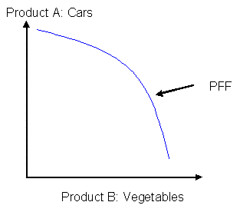Imagine this. You’re walking in a quiet dark lane at night. The stranger seems to be trailing you since you left office. This’s the same person who stalked you yesterday and the day before. Suddenly he shouts obscenities and raises a machete from nowhere as he rushes towards you. You draw the little pistol-like device you bought for USD 399.95. “This better work”, you whisper jerkily. You aim at his body and just as he’s within range, you squeeze the trigger. Two barbed darts shoot at high speed towards your assailant’s chest. Upon contact, he loses hold of his weapon, cringes and drops to the ground. You steal a quick moment of relief before running to the nearest pizza place for help, leaving behind your M18 with its target.
Enter
Taser, the new non-lethal weapon for citizens and law enforcers. The ammunition comes in the form of 2 barbed darts. When launched they deliver 50 000 V shock to the target that may stand as far as 4.5 metres. Citizens can legally carry this stun gun concealed in most states in the US. Police departments throughout the country are considering this as an alternative to live ammunition. Unlike pepper sprays and firearms, you can shoot any part of the body to temporarily debilitate the target. Feel safer going out at night?
However, imagine the opposite. For whatever reason, you’re the target. The darts pierces your skin and immediately the Electro-Muscular Disruption (EMD) technology overrides your nervous system. It may not be that painful to you, but it doesn’t matter as it relies on electrical impulses, not your pain threshold. Obediently your body reduces to the fetal position. You’ll stay incapacitated for 5 seconds.
The 28 May 2005 edition of
The Economist ran a small article on this. Enough to catch my attention as I’ve actually used it before…virtually of course in the PC game SWAT4. In 2004,
Amnesty International reported 103 deaths in North America due to stun guns. There’re also cases where they’ve been misused against children and the elderly. The article quoted a professor of biomedical engineering at Duke University as saying that the current may affect the heartbeat and kill some people.
 The TASER X26C. (Photo from Taser.)
The TASER X26C. (Photo from Taser.)
Am I supportive of less lethal weapons? Yes and no.
Yes, because they will drastically reduce the use of live bullets by law enforcers. That means less death of criminals and less stray bullets killing innocents. It’s also a more effective citizen’s self defense device than those in the market. The manufacturer even promises to replace your Taser if you leave it attached to your target.
No, because the name seems to suggest no side effects, which is not entirely true. This may promote indiscriminate use of stun gun. Law enforcers may use the Taser in situations where use of force were not required before.
At this point, many questions are still unanswered.
How does it affect people who have nervous disorders? How does it affect people with pacemakers for their heart? How lethal (or non lethal) does the police’s rule of engagement perceive Taser to be? Will the engineers in Taser, the company itself, the police department or the police officer be responsible if the Taser kills a person?
The debate continues.
 The TASER X26C. (Photo from
The TASER X26C. (Photo from  (Photo from
(Photo from  (Photo from
(Photo from 
